Crafting Your Startup's Hero Journey: Three-Act Storytelling for Investor Success
Transform your pitch from data-heavy presentations to compelling narratives that investors remember
I've seen countless startup pitches over the years, and the difference between those that secure funding and those that don't often comes down to one thing: storytelling. In this guide, I'll walk you through how to leverage the time-tested three-act structure to transform your startup pitch into a compelling hero's journey that resonates with investors on both logical and emotional levels.
The Foundation of Startup Storytelling
When I pitch to investors, I've discovered that stories consistently outperform fact sheets. This isn't just my opinion—it's backed by cognitive science. Our brains are literally wired for narrative, processing stories differently than we do raw data or bullet points.
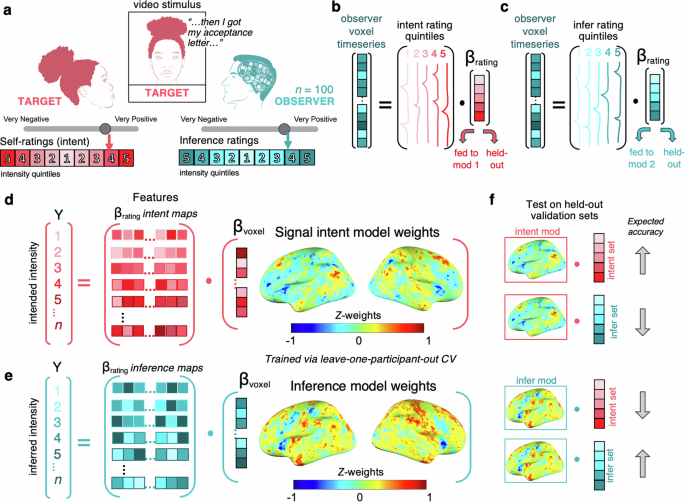
The Science Behind Story Impact
When investors hear a compelling story about your startup, their brains synchronize with yours. They experience the same neurological patterns as if they were living through your narrative. This neurological alignment creates trust, understanding, and emotional investment—exactly what you need to secure funding.
The three-act structure isn't just a Hollywood formula; it's a framework that matches how humans naturally process information and make decisions. By aligning your pitch with this structure, you create a familiar pattern that investors can easily follow and remember.
Impact of Storytelling vs. Data-Only Presentations
My research with startup founders shows the dramatic difference in investor engagement and recall between story-driven and fact-focused pitches:
Finding Your Startup's Character Arc
Every compelling startup story has a unique character arc—a transformation journey that defines your value proposition. I've found that identifying this arc is essential to crafting a pitch that resonates.
Startup Character Arc Framework
flowchart TD
A[Market Status Quo] -->|Pain Point| B[Inciting Incident]
B -->|Your Innovation| C[Solution Development]
C -->|Market Validation| D[Transformation]
D -->|Growth Strategy| E[New World Vision]
style A fill:#FEE2E2,stroke:#FF8000
style B fill:#FFEDD5,stroke:#FF8000
style C fill:#FEF3C7,stroke:#FF8000
style D fill:#ECFCCB,stroke:#FF8000
style E fill:#D1FAE5,stroke:#FF8000
The difference between feature-focused presentations and story-driven pitches is profound. When I review pitch decks with founders, I often see them diving straight into product features without establishing the narrative context. This is a critical mistake. As a startup storytelling expert, I recommend beginning with the world as it exists today, introducing the problem, and only then revealing your solution as the transformative element.
Act One: Establishing the World and the Problem
The opening of your pitch is critical—you have mere seconds to capture investor attention. I always coach founders to begin with a compelling hook that immediately establishes stakes and relevance.
Act One Elements
- Compelling hook that captures attention
- Clear articulation of market pain points
- Visual representation of the current landscape
- Emotional connection to the problem
- Data visualization that validates the problem
Creating Your Opening Hook
The most effective hooks I've seen combine a surprising statistic, a compelling question, or a brief narrative that immediately establishes what's at stake. Your hook should create an immediate emotional connection while signaling the market opportunity.
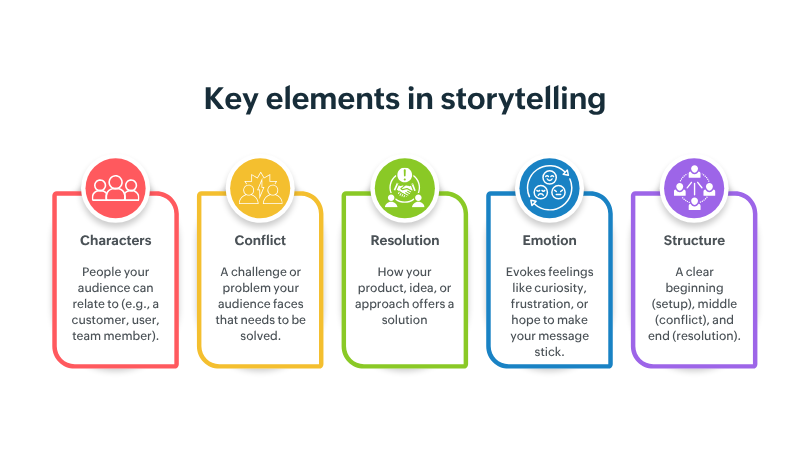
Visualizing Market Pain Points
When I help founders develop their Act One, I encourage them to transform abstract market problems into concrete visual representations. PageOn.ai's Deep Search functionality is particularly valuable here—it helps uncover compelling statistics and visual elements that validate your problem statement.
Problem Visualization Framework
Establishing Emotional Connection
The most successful pitches I've developed don't just present problems—they make investors feel them. This emotional connection is crucial because investment decisions are ultimately human decisions, influenced by both logic and emotion.
Example: Problem Articulation
"Every day, 10,000 small business owners spend 3+ hours manually reconciling inventory data across multiple systems. This isn't just inefficiency—it's 30,000 hours daily that entrepreneurs could be spending growing their businesses or with their families. Our solution gives them those hours back."
When crafting your Act One, I recommend using storytelling with data to transform cold statistics into meaningful narratives that highlight market gaps. This approach creates both intellectual understanding and emotional resonance with your audience.
Act Two: The Journey and Solution Development
After establishing the problem in Act One, I guide founders to position their startup as the hero's guide or solution in Act Two. This is where you demonstrate how your approach uniquely addresses the established pain points.
Solution Positioning
The most effective Act Two narratives I've developed position the solution as both innovative and inevitable—the natural answer to the problem you've established. This creates a sense of discovery while maintaining logical flow.
Your solution should be presented as unique but accessible—revolutionary in impact but understandable in concept. This balance is crucial for investor comprehension and confidence.

Creating Tension Through Competitive Analysis
Every compelling story needs tension. In your startup narrative, this comes from clearly articulating how existing solutions fall short and how yours overcomes these limitations.
Competitive Positioning Map
graph TD
subgraph "Market Positioning"
A[Your Solution] --- B[Competitor A]
A --- C[Competitor B]
A --- D[Competitor C]
A -.- E[High Innovation]
B -.- F[Low Innovation]
C -.- G[Medium Innovation]
D -.- H[Medium Innovation]
A -.- I[High Value]
B -.- J[High Value]
C -.- K[Low Value]
D -.- L[Medium Value]
end
style A fill:#FF8000,stroke:#333,stroke-width:2px,color:#fff
style B fill:#BFDBFE,stroke:#333
style C fill:#BFDBFE,stroke:#333
style D fill:#BFDBFE,stroke:#333
I've found that using PageOn.ai's AI Blocks feature is particularly effective for transforming complex solution architectures into clear visual narratives. This allows you to present sophisticated technical concepts in an accessible, visually engaging way that non-technical investors can easily understand.
Milestone Visualization
Investors need to see not just your solution, but the journey that led to it. Visualizing your key milestones transforms your startup's history into a compelling narrative of progress and validation.
Startup Journey Timeline
Incorporating Customer Testimonials
In my experience developing startup pitch deck narratives, I've found that customer testimonials serve as powerful "supporting characters" in your story. They validate your solution and provide external credibility to your claims.
"This solution reduced our processing time by 78% and eliminated the most frustrating part of our workflow."
— Sarah Chen, CTO at TechFlow
"We implemented this platform six months ago and have already seen a 32% increase in customer retention."
— Marcus Johnson, CEO at RetailNova
When developing your Act Two, remember that this is where you demonstrate not just what your solution is, but why it matters and how it transforms the status quo established in Act One.
Act Three: Resolution and Call to Action
The final act of your startup story is where you paint a compelling vision of the transformed world with your solution fully implemented. This is also where you make your ask clear and compelling.

Financial Storytelling
When I help founders craft their Act Three, I emphasize that financial projections shouldn't just be numbers—they should tell a story of growth and opportunity. This narrative approach transforms dry data into a compelling vision of future success.
Financial Growth Narrative
Team as Characters in Your Story
I always advise founders to present their team not just as a collection of credentials, but as key characters in the startup's journey. Each team member should represent specific expertise and value they bring to overcoming the challenges established earlier in your narrative.
Team Expertise Map
flowchart LR
A[CEO/Founder] --- B[CTO]
A --- C[CMO]
A --- D[Head of Product]
B --- E[Technical Expertise]
B --- F[Prior Startup Success]
C --- G[Industry Connections]
C --- H[Growth Marketing]
D --- I[User Experience]
D --- J[Market Research]
style A fill:#FF8000,stroke:#333,stroke-width:2px,color:#fff
style B fill:#FCD34D,stroke:#333
style C fill:#FCD34D,stroke:#333
style D fill:#FCD34D,stroke:#333
Creating a Clear, Compelling Ask
The most effective pitch conclusions I've crafted make the investment ask flow naturally from the narrative. By this point, investors should feel that funding your startup is the logical next step in the story you've been telling.
Elements of an Effective Ask
- Specific funding amount
- Clear use of funds tied to growth narrative
- Timeline for achieving key milestones
- Return potential framed as part of the story's resolution
- Sense of urgency that motivates action
I've found that leveraging PageOn.ai's Vibe Creation tools helps maintain visual consistency throughout your presentation while creating a distinctive identity. This visual cohesion strengthens your narrative and makes your pitch more memorable to investors.
Roadmap Visualization
Your roadmap should be presented not as a simple timeline but as the next chapter in your startup's story. This approach creates anticipation and helps investors envision the future they're being invited to join.

Implementation: Building Your Three-Act Pitch Deck
Now that I've covered the theoretical framework, let's focus on practical implementation. Here's how I approach building a three-act startup pitch deck that tells a compelling story.
Three-Act Pitch Deck Structure
flowchart TD
subgraph "Act One: The Problem"
A1[Title Slide] --> A2[Hook/Problem Statement]
A2 --> A3[Market Size & Pain Points]
A3 --> A4[Current Solutions & Limitations]
end
subgraph "Act Two: The Solution"
B1[Solution Introduction] --> B2[Product Demo/Visuals]
B2 --> B3[Technology/Secret Sauce]
B3 --> B4[Validation & Traction]
B4 --> B5[Competitive Advantage]
end
subgraph "Act Three: The Opportunity"
C1[Business Model] --> C2[Go-to-Market Strategy]
C2 --> C3[Financial Projections]
C3 --> C4[Team]
C4 --> C5[Investment Ask & Use of Funds]
end
A4 --> B1
B5 --> C1
style A1 fill:#FFEDD5,stroke:#FF8000
style A2 fill:#FFEDD5,stroke:#FF8000
style A3 fill:#FFEDD5,stroke:#FF8000
style A4 fill:#FFEDD5,stroke:#FF8000
style B1 fill:#FEF3C7,stroke:#FF8000
style B2 fill:#FEF3C7,stroke:#FF8000
style B3 fill:#FEF3C7,stroke:#FF8000
style B4 fill:#FEF3C7,stroke:#FF8000
style B5 fill:#FEF3C7,stroke:#FF8000
style C1 fill:#ECFCCB,stroke:#FF8000
style C2 fill:#ECFCCB,stroke:#FF8000
style C3 fill:#ECFCCB,stroke:#FF8000
style C4 fill:#ECFCCB,stroke:#FF8000
style C5 fill:#ECFCCB,stroke:#FF8000
Balancing Text, Visuals, and White Space
When I design pitch decks, I follow the 3-6-9 rule: no more than 3 points per slide, 6 words per bullet, and 9 slides for a 10-minute pitch. This creates visual breathing room and focuses attention on your key messages.
Text
30%
Concise, impactful statements
Visuals
60%
Compelling images & data viz
White Space
10%
Visual breathing room
Maintaining Visual Consistency
Visual consistency reinforces your brand identity and creates a professional impression. I always recommend establishing a clear visual language with consistent colors, fonts, and design elements that reflect your brand personality.

Adapting for Different Timeframes
One of the biggest challenges I help founders with is adapting their pitch for different contexts—from a 30-second elevator pitch to a 30-minute investor meeting. The three-act structure scales effectively for different timeframes.
Time Allocation by Pitch Length
PageOn.ai has been invaluable in helping me transform founders' rough pitch concepts into polished visual narratives. The platform's intuitive design tools and AI-powered suggestions make it accessible even for founders without design experience.
Case Studies: Three-Act Success Stories
I've helped numerous startups transform their pitches using the three-act structure. Let me share some specific examples that demonstrate the power of this approach.
Case Study: HealthTech Startup
Challenge:
A healthcare AI startup was struggling to explain their complex technology to non-technical investors. Their original pitch was data-heavy and failed to create emotional connection.
Three-Act Transformation:
- Act One: Opened with a personal patient story highlighting the consequences of medical errors, backed by striking statistics.
- Act Two: Presented their AI solution as a "clinical assistant" rather than a technical tool, using visual metaphors and clear use cases.
- Act Three: Showed projected impact on patient outcomes and hospital efficiency, with clear ROI for investors.
Result:
Secured $4.2M in seed funding after previously being rejected by the same investors. Investors specifically mentioned the clarity and emotional impact of the new presentation.
Before & After: Transforming Data-Heavy Presentations
Before: Feature-Focused
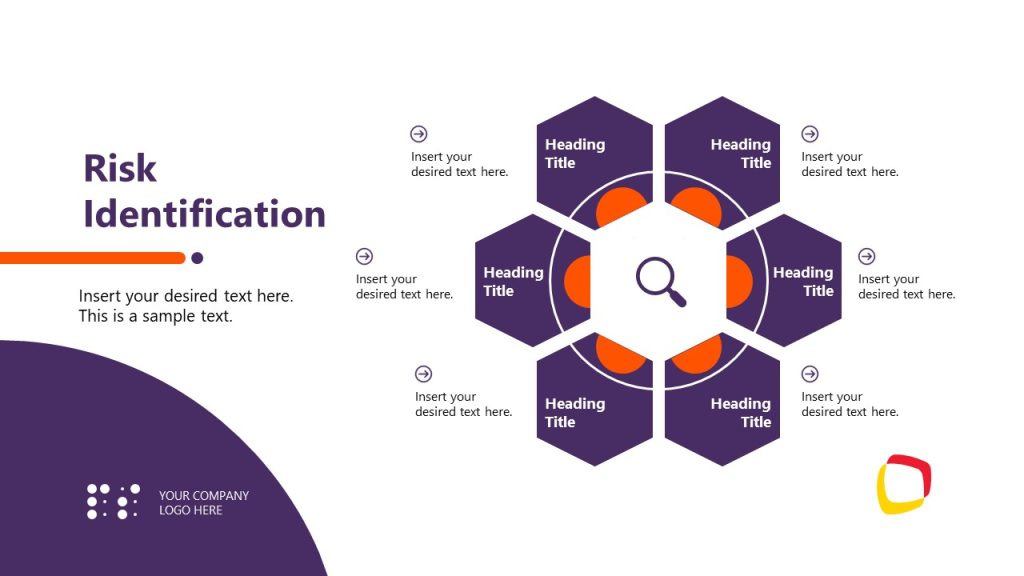
After: Story-Driven
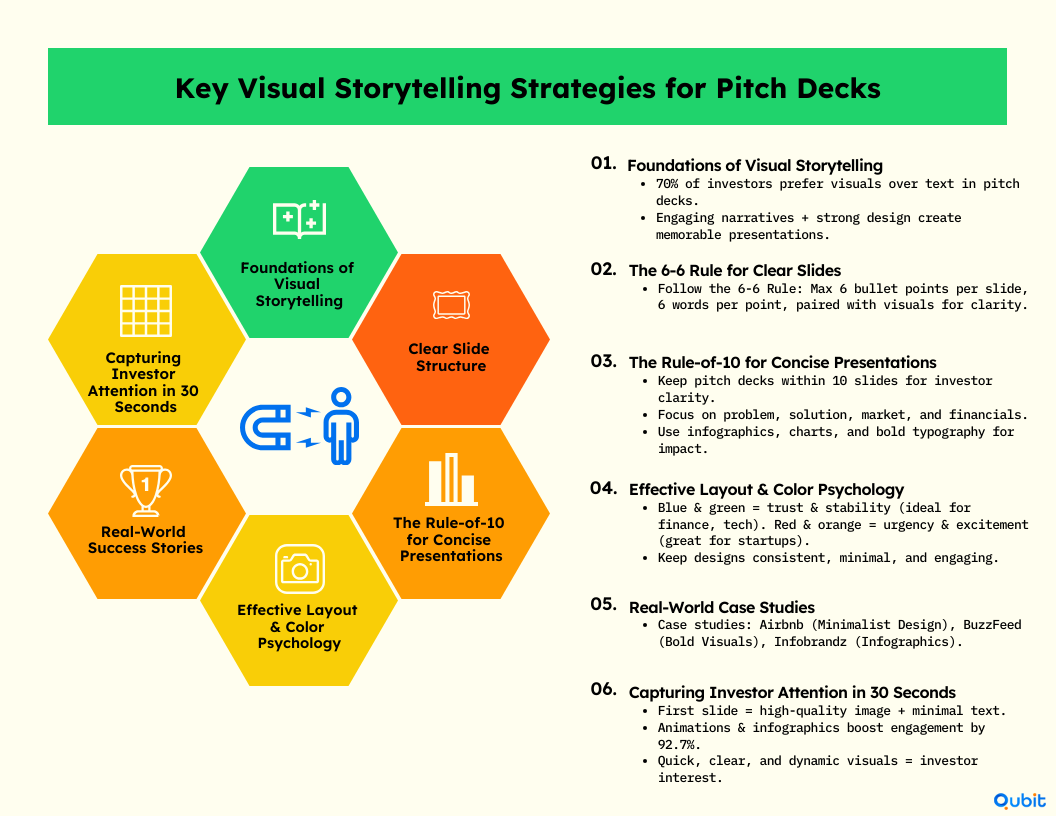
Industry-Specific Adaptations
I've found that different industries require specific adaptations of the three-act structure to resonate with their unique investor audiences.
| Industry | Act One Focus | Act Two Focus | Act Three Focus |
|---|---|---|---|
| SaaS | Workflow inefficiencies & cost | User experience & integration | LTV, CAC & recurring revenue |
| Hardware | Physical limitations & constraints | Technical innovation & IP | Manufacturing & distribution |
| Biotech | Medical need & patient impact | Scientific breakthrough & validation | Regulatory pathway & partnerships |
| Consumer | Lifestyle pain point & market size | Product experience & delight factor | Brand growth & customer acquisition |
| Fintech | Financial friction & inefficiency | Technology & security innovation | Unit economics & regulatory compliance |
Non-Designers Creating Compelling Stories
One of the most rewarding aspects of my work is helping founders without design experience create visually compelling stories. With tools like PageOn.ai, the focus can shift from technical design skills to narrative structure.
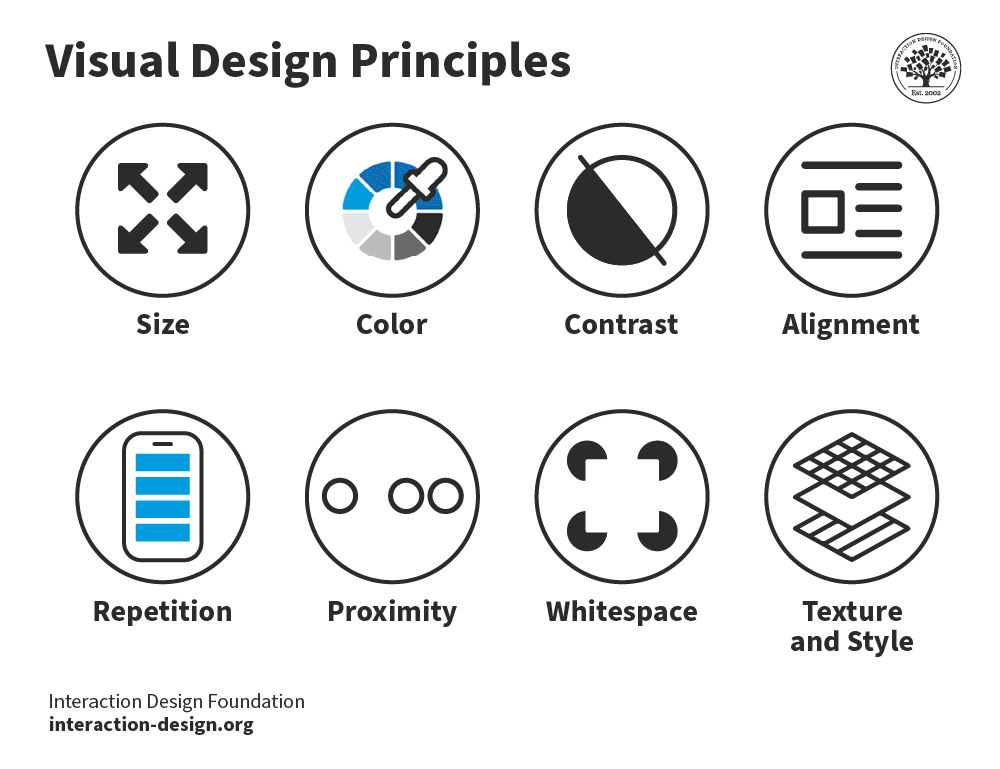
PageOn.ai's Agentic capabilities have been particularly valuable for studying and adapting successful pitch patterns to each startup's unique story. The platform analyzes effective presentations and provides tailored recommendations that maintain your unique brand identity while leveraging proven storytelling techniques.
Founder Testimonial
"As a technical founder, I was struggling to translate our complex solution into a compelling story. Using the three-act structure and PageOn.ai's visualization tools, we transformed our pitch from a technical explanation to an engaging narrative. The result? We closed our round in half the expected time."
— Alex Rivera, Founder & CEO, DataFlow Systems
The most successful business overview pitch deck presentations I've helped develop share a common trait: they prioritize clarity and emotional connection over technical complexity, regardless of the industry.
Transform Your Startup Story with PageOn.ai
Ready to craft a compelling three-act narrative that captivates investors and drives funding success? PageOn.ai's intelligent visualization tools make it easy to transform your startup's story into a visually stunning presentation—no design experience required.
Start Creating Your Story TodayBringing Your Startup Story to Life
Throughout this guide, I've shared my approach to transforming startup pitches from data-heavy presentations into compelling three-act narratives that resonate with investors. The power of storytelling in startup fundraising cannot be overstated—it's often the difference between securing investment and being forgotten.
Remember that your pitch is not just about communicating information—it's about creating an experience that makes investors feel connected to your vision and excited about your future. The three-act structure provides a proven framework for creating this experience.
As you develop your startup's story, focus on these key elements:
- A compelling Act One that establishes a meaningful problem
- A distinctive Act Two that positions your solution as uniquely valuable
- A powerful Act Three that paints a vision of success and makes a clear ask
- Visual consistency that reinforces your brand identity
- Emotional connection that complements your logical arguments
With tools like PageOn.ai, even founders without design experience can create visually stunning presentations that tell their startup story effectively. The platform's intuitive interface, AI-powered suggestions, and visualization tools make it possible to transform complex concepts into clear, compelling visuals that enhance your narrative.
I encourage you to approach your next pitch not just as a presentation of facts, but as an opportunity to tell your startup's hero journey—a story that positions your investors as partners in creating a transformed future. With the right narrative structure and visual support, your pitch can become an irresistible invitation to join you on that journey.
You Might Also Like
10 Hidden Google Workspace Marketplace Gems for Transforming Your Presentations
Discover 10 powerful Google Workspace Marketplace add-ons that will revolutionize how you create, deliver, and collaborate on presentations. Unlock hidden gems for presenters.
Quick Tips for Transforming Converted Presentations into Polished Masterpieces
Discover expert tips for editing converted presentations, fixing formatting issues, restoring visual elements, and creating cohesive slides with PageOn.ai's intelligent tools.
Transforming Presentation Creation Through Conversational AI | Building Presentations With Natural Language
Discover how natural language conversations are revolutionizing presentation creation, enabling faster, more intuitive visual storytelling with AI assistance that transforms abstract ideas into compelling visuals.
Mastering PowerPoint File Conversions: Preserve Formatting While Editing | PageOn.ai
Learn expert strategies to edit converted PowerPoint files without losing formatting. Discover pre-conversion preparation, formatting fixes, and how PageOn.ai helps maintain visual integrity.
